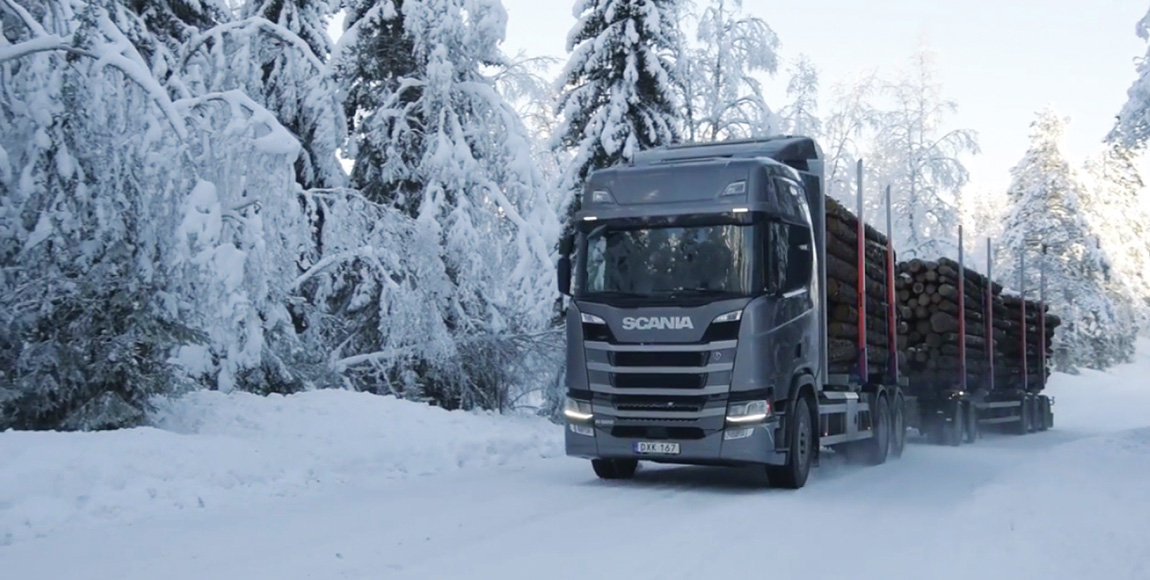Preparing for winter on the road

It is important for trucks and drivers to be ready to handle harsh winter driving conditions
Driving a truck in winter conditions can be a challenging task, especially if the vehicle and driver are not ready and equipped for the unforeseen harsh driving conditions.
With the abnormal amount of rain and the strange weather patterns that the country has experienced lately, we can expect some unseasonal weather this winter.
To avoid unnecessary and costly roadside vehicle breakdowns, ensure that all vehicles in the fleet will start on cold mornings and that the water in the engine and radiator will not freeze, extra care and maintenance must be applied.
Vehicle batteries need to be inspected regularly. Cold weather makes starting more difficult, because low temperatures make the engine harder to crank and, at the same time, reduce a battery’s power potential. A fully charged battery that delivers 100 percent of its full power at 27°C will deliver only about 65 percent of its full power at 0°C and only 40 percent at -18°C.
The amount of anti-freeze in the radiator needs to be inspected regularly to ensure that the ratio of anti-freeze to water is in accordance with the vehicle manufacturer’s specification. An insufficient amount of anti-freeze could result in the water in the radiator freezing, which will severely damage the engine. An incorrect anti-freeze ratio will also result in expensive long-term engine damage due to corrosion.
Vehicle radiators also need regular inspection to ensure that they are not blocked with dirt, insects and/or seeds from the winter grass. Extra care must be taken with vehicles that undertake long-distance trips, as often the radiators on these vehicles become blocked with insects. Care must also be taken to ensure that the radiator fins do not get damaged by the use of high-pressure cleaning guns.
Drivers play a vital role in reducing the risk of a vehicle not starting on a cold morning and ensuring that the cooling system of the vehicle is functioning correctly.
Vehicle batteries and cooling systems do not normally just fail, there are often tale-tell signs that the driver, if correctly trained and motivated, will quickly see and report or stop the vehicle before severe damage is done.
Drivers need to be motivated to carry out a daily vehicle pre-trip inspection, which should include an inspection of batteries and the cooling system.
Drivers need to be taught what to look for when inspecting the batteries and cooling systems.
The visual vehicle battery inspection points are:
• Check whether battery terminals are corroded. If they are, this will inhibit the flow of electricity, which will cause the battery to not work as required.
• If electrolyte levels are below the top of any of the plates in any cells, this could indicate overcharging, lack of maintenance or a cracked cell.
• Check for battery hold-down clamps that are loose or missing.
• Check whether battery terminals show signs of having been hammered or twisted.
• Look for any signs that the battery casing is cracked or damaged.
The visual vehicle cooling system inspection points are:
• Look for and immediately report any water leaks.
• Check the water header tank. Modern vehicle cooling systems do not loose water; therefore it should not be necessary to top up water. If the water level has dropped the driver must report this to the maintenance crew immediately.
• Inspect the radiator to make sure that it is not blocked.
By applying a little more attention and daily inspection to vehicles in the cold winter months, the risk of expensive failures will be greatly reduced.
Drivers also need to know how to handle any unexpected adverse conditions, like snow or black ice on the road, or whether or not to proceed on a road that has become flooded. This applies especially to long-haul operators that travel over mountain passes and/or to neighbouring countries. Drivers also need to be prepared for long unforeseen delays caused by bad weather conditions.
Published by
Vic Oliver
focusmagsa




